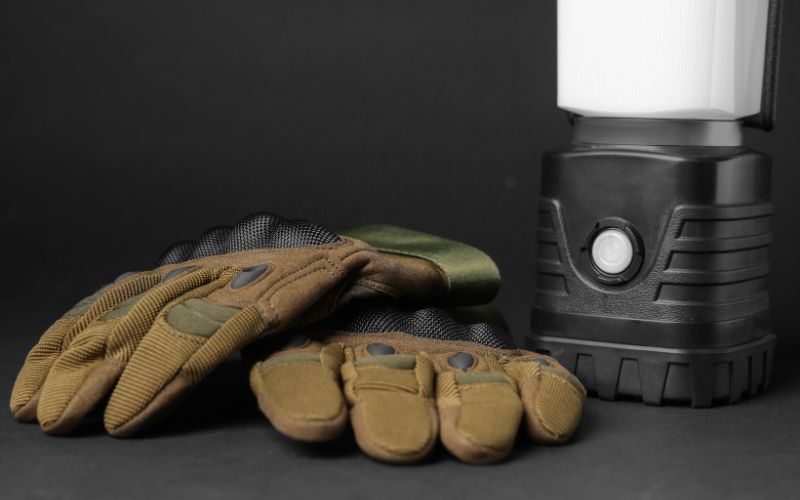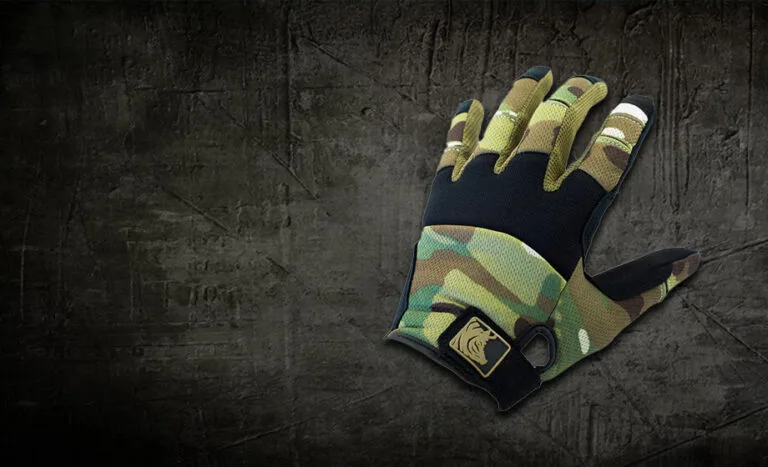Tactical Gloves: A Must-Have For Performance And Protection

Tactical gloves are necessary for professionals and outdoor enthusiasts, offering more than just hand protection. Whether in the military, law enforcement, or through other rugged outdoor activities, tactical gloves will enhance your performance, provide you with a better grip, and protect your hands from hazards. Modern tactical gloves feature comfort, durability, and agility. They are a must-have component in any professional or hobbyist’s toolbox. This article briefly outlines the fundamental characteristics of good-quality tactical gloves, various types, and selection tips.
The Evolution of Tactical Gloves
The origins of protective tactical gloves date back to early warfare, when soldiers relied on basic leather gloves for protection against the elements and battlefield hazards. These gloves offered durability, insulation, and some dexterity but lacked the advanced features required for modern combat. It wasn’t until the 20th century, during World Wars I and II, that tactical gloves evolved significantly. Soldiers needed better hand protection in increasingly complex environments, sparking the development of more functional designs.
As warfare advanced, so did glove technology. Materials like Kevlar and synthetic leather led to more specialized gloves that were more protective, lightweight, padded, and suited to various conditions. Today, tactical gloves are widely used beyond the military, appearing in law enforcement, outdoor sports, and even DIY projects. Whether you need fingerless gloves for dexterity, camouflage for stealth, or weather gloves for extreme climates, modern pairs are crafted to protect your fingers and enhance your overall experience.
Features Of Tactical Gloves

Tactical gloves have many advanced additional features that accommodate various jobs and settings. They’re constructed to be functional without compromising comfort or protection. Let’s look at some main features distinguishing great tactical gloves from ordinary gloves.
Durable Material
One of the primary requirements for constructing tactical gloves is durability. They should be strong enough to withstand the rigors of the environment yet able to accommodate full hand movement. Most tactical gloves are made with high-performance materials like Kevlar, neoprene, or synthetic suede. These materials can resist abrasion and heat, making them ideal for combats and outdoor survival missions. Heavy reinforcement stitching is commonly applied in tactical gloves, which prevents heavy wear and tear and prevents tearing or fraying easily.
Improved Grip
When placed in high-risk situations, a sure grip on tools, weapons, or equipment is essential. Tactical gloves have textured palms or special silicone grips for ultimate grip performance. The grip material will often have specific placements within the glove to enable full contact with guns, tactical tools, or climbing equipment. In wet, dusty, or oily environments, grips on a glove will not change. This is particularly important in shooting or when delicate equipment is being used.
Touch Screen Compatibility
Modern technologies play a pivotal role in military and law enforcement operations, so you should be able to use devices while wearing your gloves. Modern tactical gloves have touchscreen-compatible fingertips to allow easy use of a smartphone, GPS unit, and tablet by touching these devices without having to remove the glove. This is due to conductive materials woven into the fingertips so that the user can use the devices intuitively without compromising the integrity or performance of the glove. This is especially true in operations where communication is constant, like in search and rescue exercises and tactical missions.
Leeway and Ease
Comfort is the most critical factor in extended wear by gloves, and breathing is a part of it. Most tactical gloves have ventilated fabrics, mesh panels, or moisture-wicking liners to keep your hands dry and comfortable. Excessive sweat can make you feel pretty wet in your gloves, undermining your ability to execute. Moisture-wicking liners ensure any sweat is quickly absorbed, thus keeping your hands comfortable and cool. Be it a scorching climate or high-stress situations, breathable tactical gloves help you to focus and be agile.
Knuckle Protection
Tactical gloves feature considerable knuckle protection if involved in law enforcement or military field emergency preparedness. Knuckle-reinforced gloves entail additional protection from impacts, abrasion, or blunt trauma. This applies notably in close quarters, where the protection of the hands would make a lot of difference. Some knuckle guards can be made from TPR-like material since they absorb and dissipate the impact so that the person cannot suffer hand injuries. For that matter, users become safe with close-quarters combat or intense work without suffering hand injuries.
Agility
The best tactical gloves provide the utmost dexterity along with maximum protection. It is critical for most tasks performed by fine motor skills involving agility, such as operating delicate equipment, or even performing medical procedures in the field. Tactical gloves use thin yet tough materials, ensuring wearers will not lose full mobility and feel the tactile sensation. This “second skin” design will enable you to feel and handle objects precisely while enjoying the protective features provided by the gloves. For tasks that require you to use firearms or technical equipment often, find gloves that provide high skill.
Why Material Matters In Tactical Gloves
The material of your tactical gloves can make a huge difference in performance and durability. Some popular choices include:
- Synthetic leather: Durable and abrasion-resistant while providing good grip.
- Kevlar: Offers cut resistance and flame resistance.
- Neoprene: Great for water resistance and flexibility.
- Mesh or microfiber: Promotes airflow, making the glove breathable and comfortable.
Types Of Tactical Gloves
Many varieties of tactical gloves exist, with each category made for specific needs. Knowing the different types will help you determine the perfect glove for your task:
Combat gloves: Military and police personnel wear combat gloves while on direct combat or high-risk missions. The gloves are made to be durable, impact-resistant, and protective against cuts and abrasions.
Shooting gloves: For shooters, gloves with full dexterity and grip are key. The extreme lightness and all kinds of tactile feedback from handling firearms are important in the shooting glove. A sensitized trigger finger is one such feature that makes shooting easier and more accurate.
Patrol Glove: The patrol glove is the best glove for police officers. It satisfies the minimum protection requirements and is comfortable for patrol or other field tasks. Patrol gloves have reinforced knuckles and are considered safe for most uses.
Cold-weather Tactical Gloves: They are built for missions in cold conditions. They are designed to be well-insulating but not at the cost of flexibility or grip. These may use material such as Thinsulate, which will keep the glove warm but as light and flexible as possible.
Choosing The Best Tactical Gloves
How to Choose? With so many options, where do you start? Among these criteria are the following:
Purpose: What is the purpose of wearing these gloves? If you are an enforcer, your top priorities may be durability and protection of the knuckles. An outdoorsman or hunter might prefer breathability and grip.
Fit and Sizing: The performance may not reach its full potential if the glove does not fit correctly. Measuring his or her hand’s circumference will help you determine the right size. Above all, many people like brands that have gloves with ventilation holes in their palms. Most tactical gloves are in traditional sizing, such as small, medium, large, and extra-large, which very tightly fit on your hand.
Material: Well, every material has its benefits. Leather gloves are excellent in durability and grip, yet synthetic gloves offer better breathability and flexibility. Think about the working conditions and make a decision.
Climate: Working in extreme heat or extreme Cold? Choose gloves made for your climate. The gloves will keep you warm in extremely cold temperatures while being light and breathable in warm weather.
Why Choose Chase Tactical Gloves?
Chase Tactical Tactic Operating System tactical gloves combine the latest tactical gear materials with user-centric design and meet the needs of military, law enforcement, and outdoor sports professionals. We have what you need, from full-dexterity shooting gloves to heavy-duty combat gloves. Insides are made from top-tier materials such as Clarino synthetic leather. They are designed from the beginning with operator feedback to ensure you get the performance you need in the field.
Conclusion
Tactical gloves are much more than safety tactical gear; they belong to any operator. They provide the right mix of durability, skills, and specialty features to enhance performance in high-pressure situations. Whether for the military, law enforcement, or just an enthusiast for some outdoor adventure, a good pair of tactical gloves will protect those hands and get them action-ready.
Frequently Asked Questions
Are Tactical Gloves Compatible With Touchscreens?
Yes, Chase tactical modern gloves have fingertip panels made from a material that allows you to operate touch-screen devices without removing the gloves.
What Is The Best Material For Tactical Gloves?
Tactical gloves can be made from Kevlar or synthetic materials, mainly highlighted for durability, heat resistance, and flex. Leather is also renowned for its grip and hardness, but artificial materials primarily provide better breathability.
Can Tactical Gloves Be Used In Cold?
There are even tactical gloves designed for cold temperatures. These gloves contain insulation materials, such as Thinsulate, which can warm without losing flexibility.


